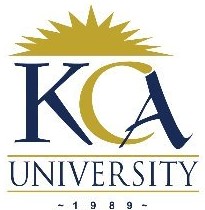 UNIVERSITY EXAMINATIONS: 2011/2012
UNIVERSITY EXAMINATIONS: 2011/2012
SECOND YEAR EXAMINATION FOR THE BACHELOR OF
SCIENCE IN INFORMATION TECHNOLOGY
BIT 2107 OBJECT ORIENTED ANALYSIS AND DESIGN
DATE: AUGUST, 2012 TIME: 2 HOURS
INSTRUCTIONS: Answer Question ONE and any other TWO
QUESTION ONE
a) Describe Object-Oriented paradigm (2 Marks)
b) Differentiate between Object-Oriented and Structured Analysis and Design.
(4 Marks)
c) What challenges necessitated the transition from structured analysis and design to
objected orientation paradigm? (4 Marks)
d) Using “Bank Account” as an example and in UML notation, Define the following
terms (6 Marks)
i. Class
ii. Object
e) Define the term inheritance (2 Marks)
f) Using UML notation, depict the inheritance relationships between the following
classes: Shapes, 4-sided shapes and Other shapes. NB; show the attributes and
operation that can be associated with each shape. (8 Marks)
g) Using an example describe the concept of multiple inheritance (4 Marks)
QUESTION TWO
a) Discuss the following techniques of gathering software requirements stating two
advantages and two disadvantages of each. (6 Marks)
i. Interview
ii. Observation
b) By the use of an appropriate example describe the term overriding (6 Marks)
c) Differentiate between the following (4 Marks)
i. A model and a diagram
ii. Activity and action
d) Discuss four benefits of modeling (4 Marks)
QUESTION THREE
a) Read the following narrative then draw a sate diagram (7 Marks)
When an order object enters the Checking state it performs the activity “check items.”
After the activity is completed the order object transitions to the next state based on the
conditions [all items available] or [an item is not available]. If an item is not available
the order is canceled. If all items are available then the order object is dispatched. When
the order object transitions to the Dispatching state the activity “initiate delivery” is
performed. After this activity is complete the order object transitions again to the
Delivered state.
b) Describe the following types of modes (3 Marks)
i. Static models
ii. Dynamic models
iii. Behavioral models
c) Discuss the steps involved in OOAD (6 Marks)
d) Describe the following use case relationships (4 Marks)
i. Generalization
ii. Include
iii. Extend
iv. Uses
QUESTION FOUR
a) Read the following scenario and answer the questions that follow
A client makes a call to the help desk that is taken by the operator: who then
determines the nature of the problem. Some calls can be answered immediately; other
calls require research by the support representative and a return call.
i. Name the actors in the scenario (3 Marks)
ii. Draw a use case diagram (7 Marks)
b) Using suitable diagrams differentiate between sequence and collaboration diagrams
(which are types of interaction diagrams) (6 Marks)
b) Define the term multiplicity (1 Mark)
d) Explain any three types of multiplicity (3 Marks)
QUESTION FIVE
a) The following terms are close related however they are also very distinct. Describe
each one of them highlighting one the differences. (6 Marks)
i. Object-Oriented Analysis (OOA)
ii. Object-Oriented Design (OOD)
iii. Object-Oriented Programming (OOP)
b) Discuss the advantages of Object Orientation (7 Marks)
c) Describe the following UML diagrams drawn during OOAD (3 Marks)
i. State diagrams
ii. Use case diagrams
iii. Class diagrams
d) Describe the following relationships that may exist among classes. Use an example as
well as UML diagram. (4 Marks)
i. Association
ii. Aggregation
